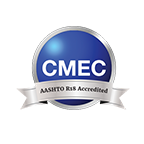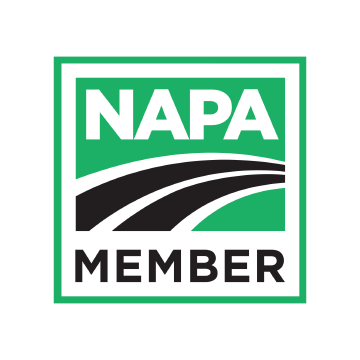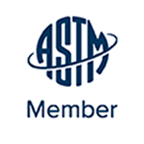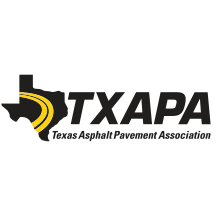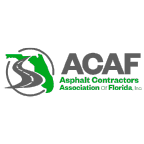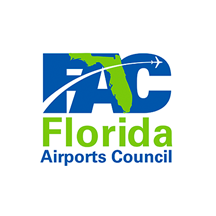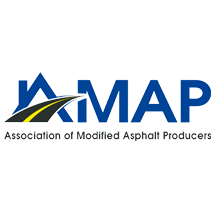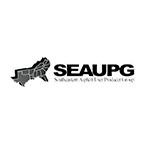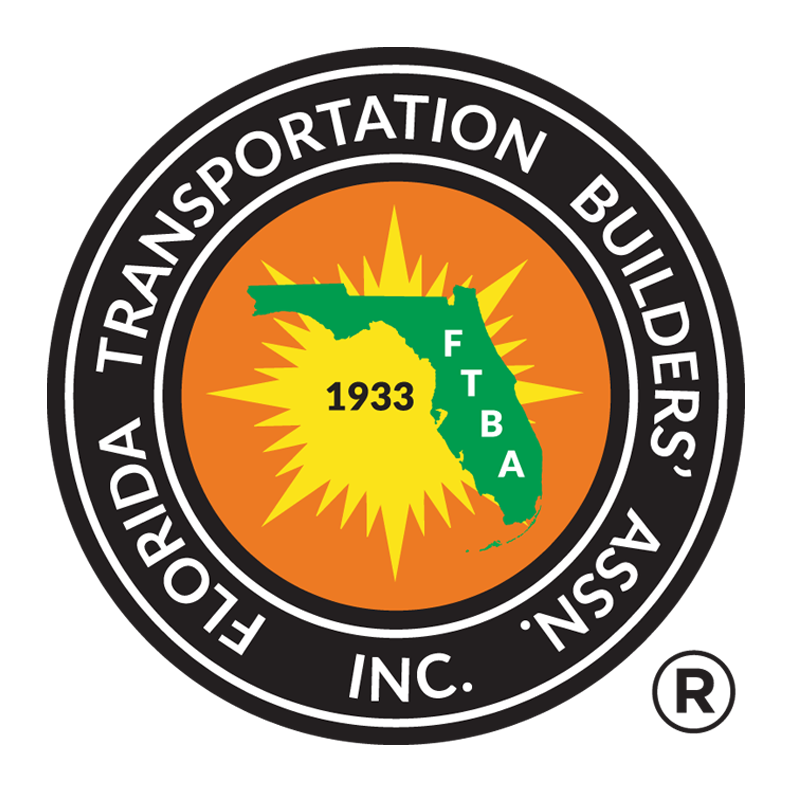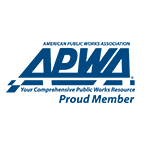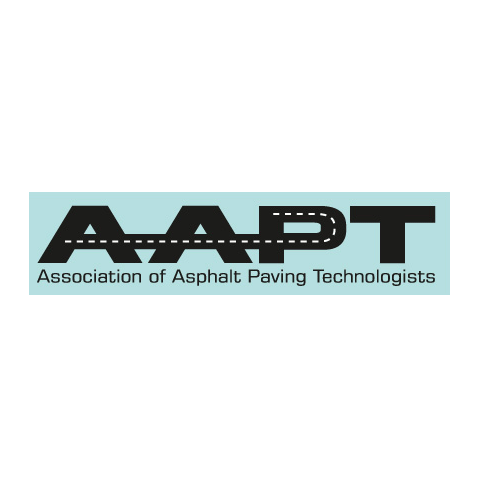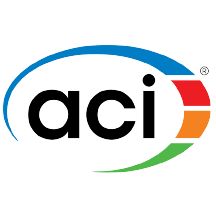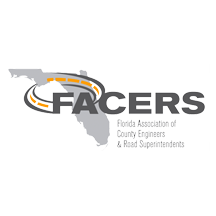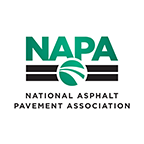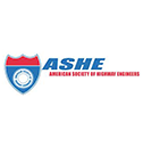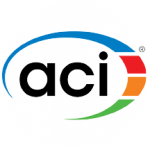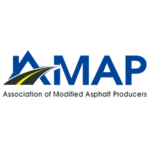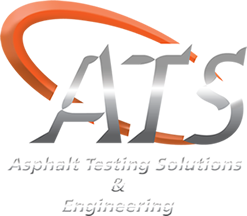Background:
To quote from a recent National Asphalt Pavement Association press release, “Of all the materials recycled in the United States, nothing is recycled as consistently as asphalt pavement mixture. The latest survey of asphalt mix producers finds that more than 99 percent of the asphalt pavement material removed from roads and parking lots in 2017 was put back to productive use, primarily in new asphalt pavement mixtures.” Most asphalt mixes use reclaimed asphalt pavement (RAP) in their designs to help drive down costs during production. Unfortunately, too much RAP can make the asphalt mixture stiff and brittle, which in turn will result in poor performance of the pavement and a shorter lifespan.

In Florida, Styrene-Butadiene-Styrene (SBS) modified binders, have proven to have superior performance compared to non-polymer modified binders. Currently, the Florida Department of Transportation (FDOT) allows a maximum of 20% RAP in any mixture that uses a PG 76-22 to capitalize on the cost benefit of the RAP usage and the performance benefit of the polymer.
Among the concerns with higher RAP contents is the recycled binder replacement, which in turn equates to less virgin asphalt, and consequently a diluted polymer content. To combat this, Kraton Performance Polymers LLC (Kraton) has recommended using PolyRejuvenator™ technology: This combines use of a rejuvenator that will activate and “rebalance” the RAP binder to a softer, more usable product and a highly polymer modified binder (HiMA), designated as “High Polymer” in the FDOT Specifications. PolyRejuvenator™ thus increases the amount of RAP that can be used in the mixture while compensating for the diluted polymer content.
Using a balanced mix design concept that optimizes the cracking and rutting performance of an asphalt mixture is a way to allow an asphalt producer to find innovative ways to utilize RAP while maintaining performance. During the design process, if performance test results for resistance to cracking are low, a typical fix would be to decrease the RAP content or increase the asphalt binder content; the latter being more expensive. An innovative alternative is to add a rejuvenator to the asphalt mixture that activates the RAP binder and enhances the overall performance.
Kraton completed a cost analysis calculating the performance benefit of the PolyRejuvenator™ technology and increased binder content versus the cost benefit of RAP and found the breaking point to be approximately 40% RAP. Kraton then evaluated a 40% RAP granite mixture using its PolyRejuvenator™ technology at a traditional 4.0% air voids per FDOT requirements, as well as the mixture’s rutting and cracking performance as compared to the traditional mixture of 40% RAP using a PG 52-28. Kraton then decided to use a balanced mix design approach by designing at 3.5% air voids, which increased the optimum binder content, but ultimately balanced the performance of the mixture.
Project Scope:
Three mixtures were produced at the Asphalt Testing Solutions & Engineering (ATS) laboratory in Jacksonville, Florida, using components outlined in Table 1. PG 52-28 binder was used in one mix designed with 4.0% air voids and PolyRejuvenator™ was used in two mixes, one designed with 4.0% air voids and one with 3.5% air voids. The PolyRejuvenator™ mixes included the HiMA binder as well as a dosage of Sylvaroad™ RP 1000 performance additive.
Table 1 – Mix Design Components
| Sample | Description |
| RAP | Crushed RAP |
| #78 Stone | Vulcan Materials |
| #89 Stone | Vulcan Materials |
| W-12 Screenings | Vulcan Materials |
| HiMA (High Polymer) | FDOT Approved |
| Rejuvenator | SylvaroadTM RP 1000 Performance Additive |
| PG 52-28 | FDOT approved |
| Liquid Anti-Strip (0.5% by weight of binder) | FDOT approved |
Performance Testing Evaluation:
Each mixture was evaluated with the Illinois Flexibility Index Test (I-FIT) per AASHTO TP 124 and the Hamburg Wheel Tracking Test per AASHTO T 324. A summary of the results can be seen in Table 2.
Table 2 – Summary of Performance Testing Results
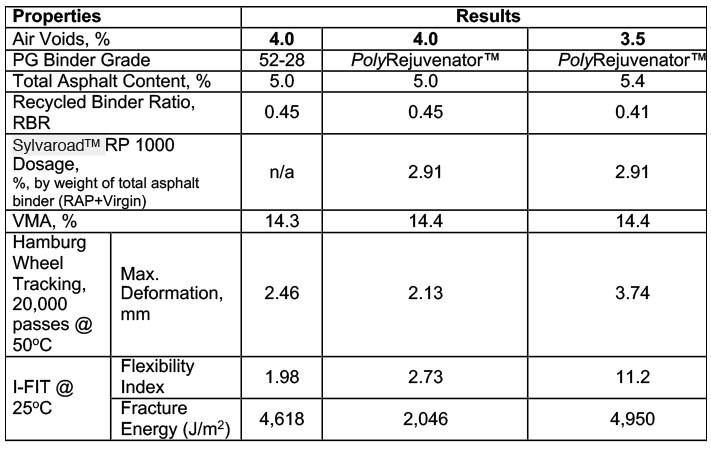
Conclusion:
The traditional FDOT approved mix design with 40% RAP and PG 52-28 at 4.0% air voids versus 40% RAP with the PolyRejuvenator™ technology had comparable volumetric and performance-related test results.
Using the balanced mix design approach, the asphalt binder content was increased by 0.4%, reducing the air void content by 0.5%; while maintaining all FDOT volumetric requirements. The Hamburg Wheel Tracking Test result increased slightly (1.61.mm) for the modified PolyRejuvenator™, while the Flexibility Index was over four times greater.
In conclusion, the adjusted PolyRejuvenated™ balanced mixture design has much greater resistance to cracking while maintaining excellent resistance to rutting.


